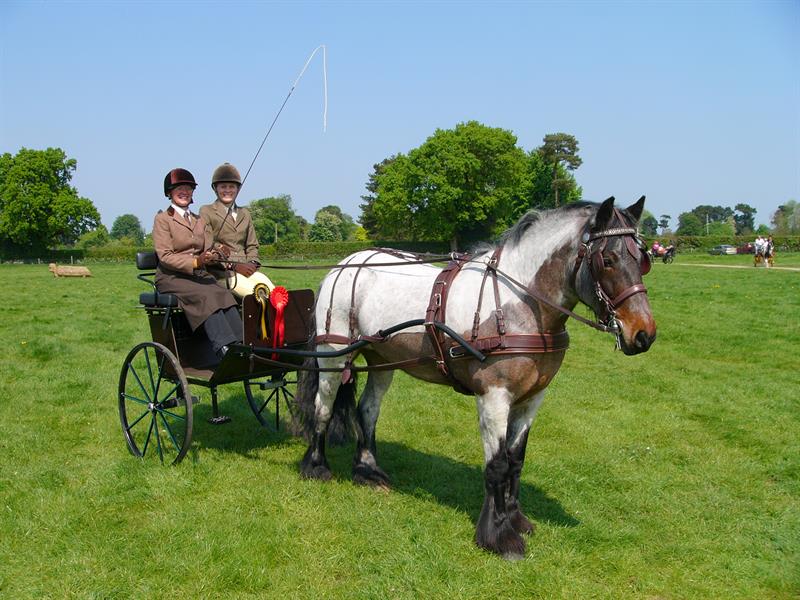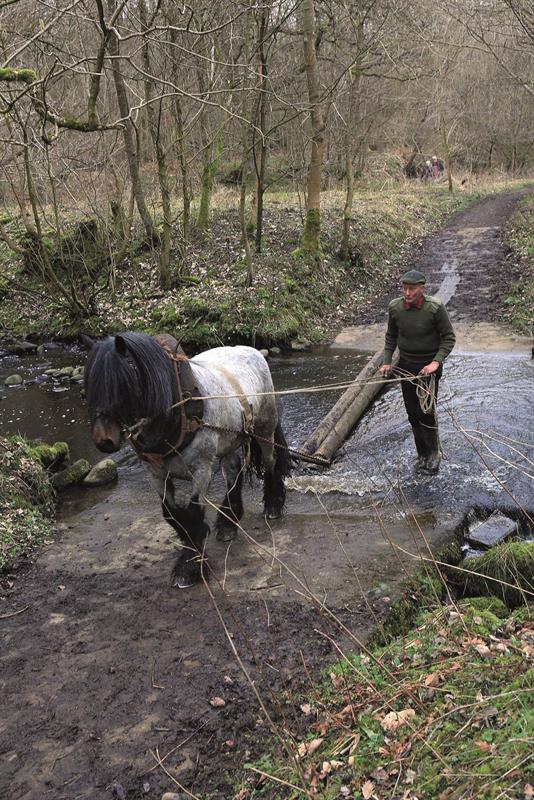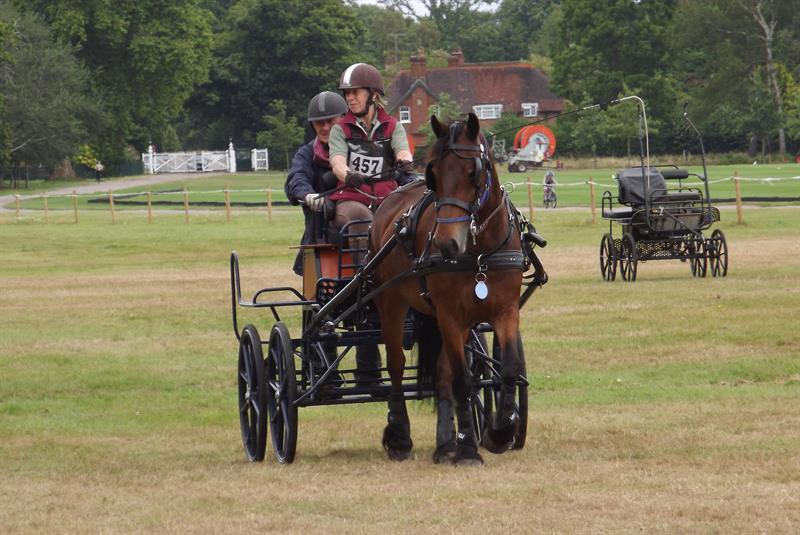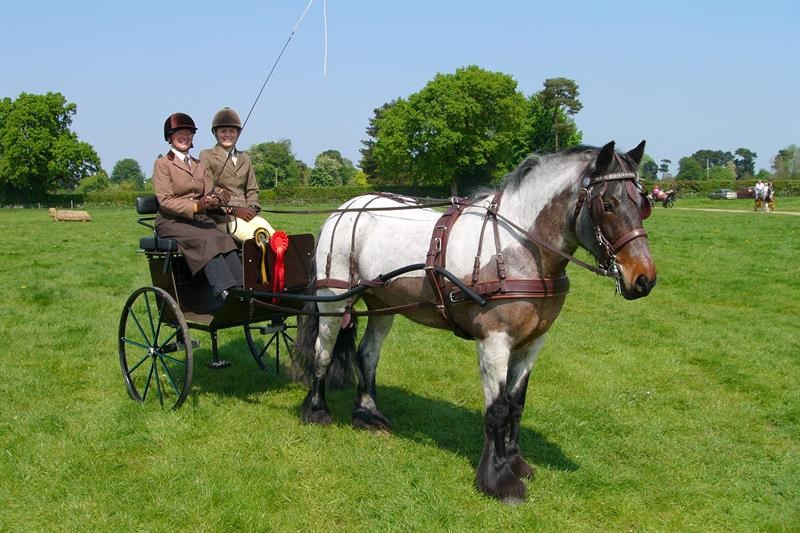Looking back through history the Dales Pony has served its country well, as both a working and war horse, so why is this versatile breed on the endangered list. Susan Dunne meets with those who are passionate about its survival.
Sometimes referred to as the ultimate all-rounder, the Dales pony can turn its hoof to seemingly anything. Blessed with an iron constitution, great strength and endurance as well as a calm steady temperament, this native of the North was formerly used for lead mining on the higher eastern slopes of the Pennine range. Working as a pack pony in teams of up to 20 they traditionally carried up to 240 lbs of lead, coal and ore over long distances and hilly terrain.
As with most working breeds, numbers have drastically reduced. Although the breed was a popular choice for the British Army during both world wars, it came close to extinction after the Second World War and it is largely due to the work of a few dedicated breeders and the Dales’ versatility which has ensured it a future as both a driven, ridden and working pony. However numbers remain low and the breed is currently classed as “critical” by the Rare Breeds Trust with fewer than 300 breeding mares.
This hairy breed whose flowing mane and tail and abundance of feathers are much prized comes in a variety of colours although up to 80 % of Dales are black – which should help when looking for a matching pair. Browns, bays, roans and greys are also acceptable within the breed standard and the preferred height is between 14 hh – 14.2 with a powerful build strong enough to carry an adult.
Charlie Parker
Charlie and Gina Parker of the Roandale Stud in Teesdale in the heart of Dales Pony country are passionate about the preservation of native breeds and the Dales in particular. They say: “In this country we have wonderful native breeds and most have played some part in the country’s development and should be treasured.” Charlie has used his homebred Dales and Dales Cob ponies for “snigging” – extracting timber from forests using horses and ponies – since 1971.
He says “The Dales is a true great all-rounder. It’s known as a working man’s pony and I’m passionate to keep that going. I’ve promoted the breed over quarter of a century demonstrating timber logging with them. If you keep them in work and doing different jobs it keeps them sweet.”
He drives mainly for pleasure but also does some driven showing and says Of the Dales temperament: “Some can be a bit sharp if bred for the show ring but generally they have very good temperaments and a bit of spark when you need it. Mine loves to show off in the show ring. They’re very easy to do if you look after him – mine rarely ail and they’re very economical to keep. They’re always better kept out as that’s how they’re bred and even though we’re at 1200 feet above sea level all ours are happy being out all year round.”
Moira Evans
Moira Evans from East Sussex came to Dales ponies from a background of Arabs and Thoroughbreds and has never looked back. She says: “My daughter’s Arab was lame and we borrowed a Dales pony for summer camp. She had such a good time that I thought one would do me for my old age!” She first bought Penny (now 25) and then Rebel (now 17) as a 2 year old from the Roandale Stud and her driving career began: “Charlie said to me when we bought him ‘You are going to drive him aren’t you?’ I said ‘I don’t know how’ and he said ‘Well you’d better learn then !’” Learning together, Moira and Rebel have gone on to do pleasure driving and BDS drives with the Oaks Driving Club, and for the past 13 consecutive years since Rebel was 4 they have been to the London Horse Harness Parade at Ardingley. Last year they also had a go at showing and went to Windsor where they drove in front of the Queen. Moira has actively promoted the breed through doing driven demonstrations, including taking Rebel to Pony Club three times: “He’s very good at just going off voice commands because he’s driven and they all thought that was great!” Although he is ridden every day, Moira says he is happiest driven: “That’s what he really wants to do and he also loves doing cones.”
She describes Dales as generally having a very good temperament – “at least four RDA groups want Rebel! They are very strong and are probably more of an adult’s pony than a child’s. In terms of maintenance they are very hardy and mine live out all year round so they’re very easy to look after. They’re never sick or sorry and neither of mine has ever lost a shoe – their feet are absolutely superb.”
Martin Pink
Martin Pink is the BDS Assistant Area Commissioner for Berkshire and drives two Dales ponies, Bobbie and Alfie, singly. He has done pleasure rides, driving trials and showing, Bobbie having won the Driving Section of the Dales Southern Show in Epsom no less than five times.
So what attracted him to Dales? Martin says: “I like hairy ponies and I like feathers! I’d ridden and driven Fells which I liked but I wanted something bigger. Dales are less of a pure breed than Fells but they have better action and are a bit bigger. Both ours are ridden more than driven and they have to be quite strong.”
As someone who came to horses later in life, Martin, feels that Dales ponies can be a good option for the newcomer as well as the more advanced horse person: “I didn’t come to horses till I was in my thirties but I’ve found Dales incredibly easy to deal with – you don’t have to be an expert or a natural horseman to work with them. Bobbie has really helped me out. He might be a bit grumpy in the stable but he knows when he’s there to work and has got a very steady, sensible temperament. They look after people and they’re sensitive to their needs. They’re possibly not the prettiest pony (though Bobbie is!) Alfie’s a bit lazy in comparison but they are incredibly versatile and can do virtually anything. I find it sad that they’re a rare breed because they really are fantastic ponies.”



This article first appeared in the June 2019 issue. Subscribe here to keep up to date with the world of Carriage Driving
